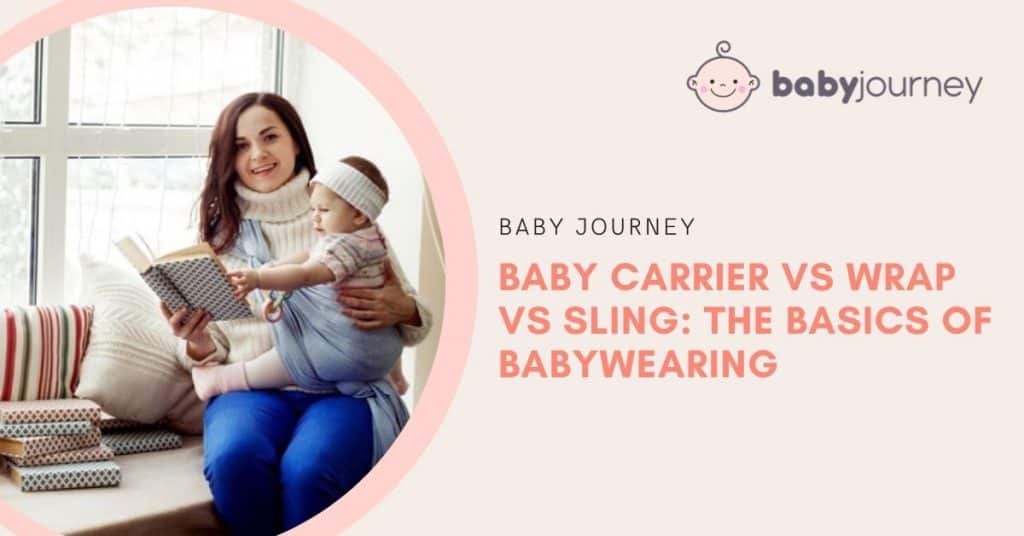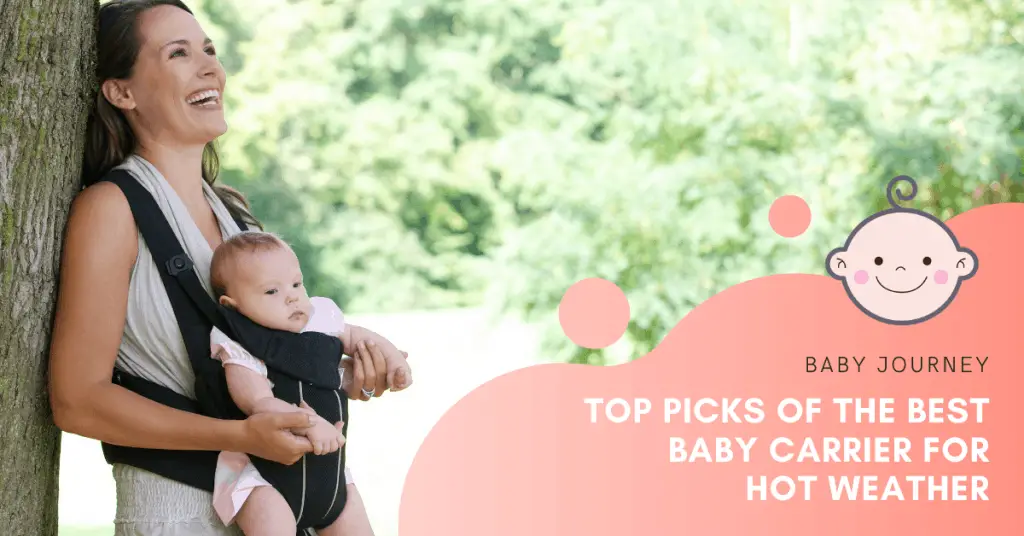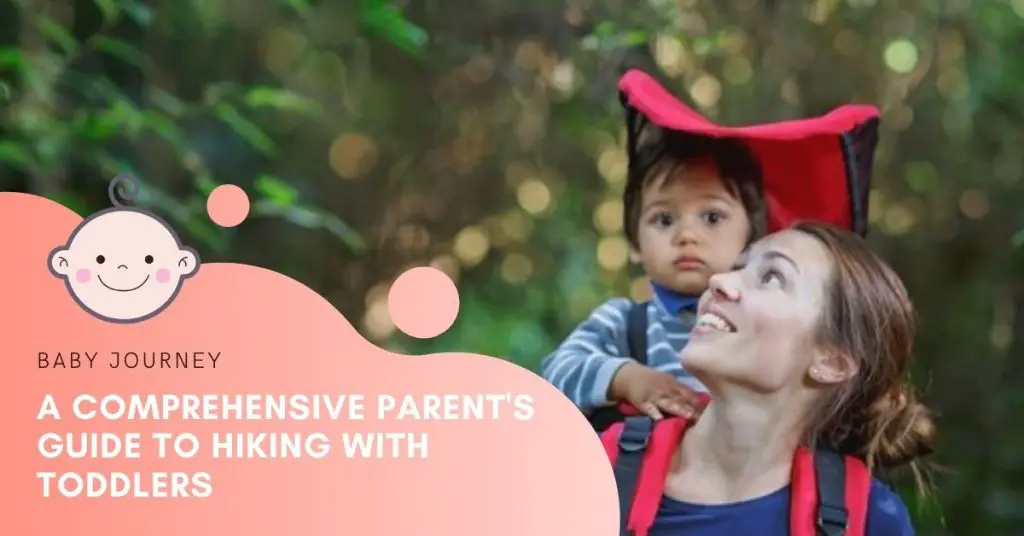Babywearing. It sounds self-explanatory, right? That is until you realize how many different ways there are to carry your precious little one around.
A quick search of babywearing brings up a host of terms, like soft structured carrier, and newborn sling carriers, and baby wraps. It’s enough to make you want to just plop them on your hip or cradle them in your arms.
But don’t give up on babywearing just yet! Once you find the perfect carry option for you, carrying your child around will be so much easier and comfortable.
In this guide, we will cover the basics of a baby carrier vs wrap vs a sling. You’ll learn the differences between the most popular types of carriers and how to choose the right one for your family!
Baby Carrier vs Wrap vs Sling: Types of Baby Carriers Explained
Merriam-Webster defines babywearing as the practice of holding or carrying your baby close to your body using a supporting device. As it turns out, the supporting device can be a variety of things. Let’s take a closer look at the different ways parents can baby-wear.
There are three main types of baby carriers used for babywearing. They are a carrier, a sling, and a wrap. When looking at baby sling vs wrap or baby wrap vs baby carrier there are pros and cons to each, but first, you must understand the basics.
A baby carrier is a broad term, and there are a few carrier types that can fall under this umbrella. In general, a baby carrier has some structure to it. This means that it has a seat, back support, and some type of straps or buckles that hold the carrier and infant to the parent.

Soft-Structured Baby Carrier
A soft-structured carrier is sometimes referred to as a buckle carrier. They include shoulder straps and a waistband strap for the parent. These straps are outfitted with plush padding and buckles for both comfort and convenience. They also adjust!
They also have a fabric pouch for your child to sit in. The pouch has a place for their bottom and a panel that will support their torso either from the front or back depending on which way they’re facing. A wonderful example is the Ergobaby Carrier.

A backpack carrier is similar, but it has even more structure. This type of carrier can only be worn on your back, as the name implies. It has straps for your shoulders and your waist, just like a backpack, and a chest strap as well. This type of carrier is perfect for carrying your child during hiking as an alternative to a hiking stroller.
The “pouch” for the child is more of a true seat with metal or plastic structuring below the fabric and padding. Sometimes these carriers include pockets and storage compartments. Check out the Chicco Backpack Carrier to see what we’re talking about.
A Mei Tai or Meh Dai carrier is a hybrid option, a cross between a baby wrap and a soft-structured carrier. It still includes the structured pouch, but long fabric pieces replace the straps. This fabric doesn’t buckle but must be wrapped and tied around the parent’s body.
Like the soft-structured carrier, they are versatile in carrying positions. It can be used on your front or back, or sometimes even your hip. DIDYMOS Meh Dai is a great example.
Pros:
- Easy to use and adjust
- Can be used with a wide range of ages
- Padding is comfortable for wearers
- Offers a safe and ergonomic seat for baby
- Backpack carriers include storage and are ideal for active parents
Cons:
- Usually the most costly
- May require inserts for newborn use (backpack carriers cannot be used with a newborn)
Baby Slings or Ring Slings
A baby sling, like the Maya sling or the Nalakai sling, are commonly called ring slings. They use two rings positioned at the wearer’s shoulder and a long piece of fabric. A sling carrier is great for breastfeeding babies discreetly when outdoors.
The fabric is wrapped around the wearer’s body from shoulder to opposite hip and then is fastened within the rings. This makes a pouch in which you can tuck your baby.
The traditional sling carry is on the front/side of the parent’s body, however, there are other positions in which you can carry your child using a ring sling. The fabric is not stretchy and your baby’s weight keeps it from slipping out of the rings.

Pros:
- Easily adjustable
- Great for newborns
- Can be used with a variety of ages
- Doesn’t require learning a complicated wrap or tie
- Ideal for breastfeeding
Cons:
- Fabric is long and can be a lot to deal with
- Puts strain on the carrying shoulder
Baby Wraps
You may have heard of the Boba wrap or the ever-popular Moby wrap. These baby wraps are made of one very long piece of fabric that has minimal stretch. The fabric must be wrapped around the wearer’s body in a specific manner and then tied.
When done properly this creates a pouch and/or a seat for the baby. These wraps are very versatile and can be used for a front, back, or hip carry. There are many colors and patterns available, most are 100% cotton or cotton blended with silk, linen, or bamboo.
Using a baby wrap does come with a learning curve. You must know how to properly wrap and tie the cloth to ensure it is safe for your child. However, they are ideal for newborns because they are so cozy. Older babies and even toddlers can be worn using a baby wrap.

Pros:
- Lots of carrying positions
- Infinitely adjustable
- Very comfortable
- One of the best options for newborns
- Wide range of fabrics, colors, and patterns
Cons:
- Takes learning and practice
- Can be hot due to all the fabric
Baby Sling vs Wrap vs Soft Structured Carrier Comparison
You are probably wondering about a baby wrap vs carrier or a ring sling vs wrap. Which one is better for you and your baby?
There isn’t a definitive answer. I honestly had to try out each option during the childhoods of my three children. Some of my kids preferred one carrier to the other. Sometimes I found one carrier more convenient. In the end, I use each of my carriers and choose based on the situation and child.
Wrap vs Ring Sling
When comparing a baby wrap to a sling, it comes down to parent preference. Both of these carriers provide a similar experience for your baby. However, the wrap takes time and practice to learn. It also requires you to manage a great deal of fabric when you want to put it on.
The ring sling doesn’t require as much education. There is the same amount of fabric but it is generally easier to manage with the use of the rings. The ring sling offers fewer carrying positions than a baby wrap.
Carrier vs a Wrap or Sling
You can also consider a carrier instead of a newborn carrier sling or a wrap. Carriers take the least amount of patience and skill. They are almost as comfortable for the parent as a wrap and usually more comfortable than a ring sling. Carriers suit a wide variety of ages and most offer at least two types of positions, front, and back.
Carriers are more costly though. In addition, when looking at a baby wrap vs baby carrier or a baby sling vs carrier for a newborn, the wrap and sling win out. Carriers aren’t as cozy and to use them with a newborn you may need an insert or special pillow.
What to Know Before Buying a Baby Carrier
A great baby carrier, wrap, or ring sling can last you through your baby’s entire childhood. Sturdy soft carriers or backpack carriers can usually go through multiple children. However, it is very important to always check the condition of your carrier.
To keep your child safe, the fabric, seams, straps, and buckles of your baby carrier need to be intact and sturdy. This is why purchasing second-hand carriers can be risky as these things do wear out.
Additionally, be sure to fully read the instructions before you carry your baby. Watch videos, practice, and even try it out with a baby doll.
When choosing a baby carrier, wrap, or sling, here is what we suggest you keep in mind.
Carry Position Preference. There are lots of pros and cons of babywearing, some of the biggest pros depend on the position in which you carry. Newborns benefit from skin to skin, and love wraps or slings that keep them on your chest.
As your child ages, they may care less about the position but you will likely prefer keeping them on your back. Check out how many carry and position options your device has and how well it will transition with your child.
Budget. Baby carriers, especially specialized backpack carriers tend to be more expensive than ring slings or wraps. However, you can come across costly luxury wraps and slings too.
Baby’s Age. Newborns like slings and wraps, but these devices aren’t super practical for toddlers. Consider your little one’s age and activity level before you buy.
Carrier Comfort. Of course, you want your carrier to be comfortable on your body. Pay attention to how it feels on your back and shoulders. Padding and adjustability are key.
You also want it to be somewhat breathable and cool. Check out the fabric type; cotton, bamboo, or linen are usually best for wraps and slings. Making sure there is venting for soft structure or backpack carriers is also important.
Making Your Own Baby Carriers
As long as you are careful, you can make your own baby carrier. To keep it safe and secure for your child you must pay close attention to your materials and process (like stitching and finishing)
A no-sew ring sling is one of the most popular options. You can check out an easy tutorial here courtesy of Lindsay Brooke.
Savvy parents can also make their own baby wrap. Choosing the right fabric is vital so pay close attention. We like this no-sew option from Penny Pinchin’ Mom but you can also finish your seams if you want.

Baby Carrier FAQs:
Do baby carriers like backpack carriers, baby wrap, or sling help with wind?
A wrap carrier for baby, a sling, and even a soft-structure carrier can help keep the wind from your child as long as they’re completely shielded within the pouch. Backpack carriers are a bit more open, though some have vented plastic shields.
How long can you carry a baby in a wrap, sling, or backpack carrier?
Baby wraps and slings are ideal for newborns and babies up to one year. You can still use them with toddlers but most parents find backpack carriers or larger soft-structured carriers more convenient.
What do you do if your baby doesn’t like the carrier?
My best advice for if your baby doesn’t like your carrier is to keep trying. You may have the wrap wrong, the straps too tight, or your child might just be fussy. Try different positions, carries, and even carriers!
When should you stop using a baby carrier?
This depends on your type of carrier. Most of them included maximum weight recommendations which you should always follow.
Can you sleep with your baby in a wrap?
While your little one may love sleeping in the wrap, you should never sleep while babywearing. Sleeping with your baby in a wrap is extremely unsafe due to the soft structure, unlike the firm surface of a bassinet or crib.
Nothing Beats Baby Wearing!
Whether you use a baby sling or carrier, a wrap, or a backpack, babywearing is great! It helps keep your child safe, close to you, and can let them view and explore the world.
We hope we have cleared up a few questions about the different baby-wearing options. If you are curious about anything else related to baby carriers and babywearing be sure to leave your question in the comments!
—

Last update on 2024-04-23 / Affiliate links / Images from Amazon Product Advertising API



